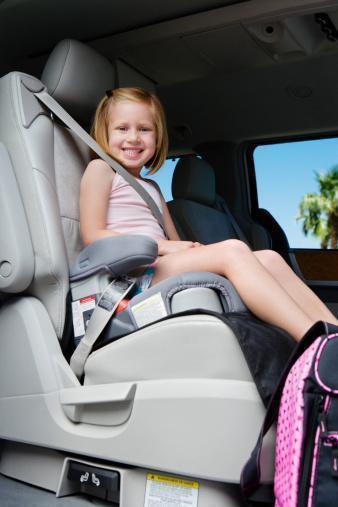Follow Us |Facebook
Call or Text for a Consultation
Changes to Child Car Seat Guidelines
 Last week, as reported by the Chicago Tribune, the National Highway Traffic Safety Administration (NHTSA) recommended changes to the child car seat safety guidelines. The first of the two proposals requires that the current Lower Anchors and Tethers for Children (LATCH) system, the standard car seat system implemented in 2002, alter the weight limit for their child safety seats. This would lower the maximum weight of the child user to 65 pounds (originally 70 pounds), taking into consideration the combined weight of the seat and the weight of the child. This proposal comes after significant testing showing that the LATCH system overloaded on impact during one of the tests that placed a 10-year-old, 77-pound dummy in a 30 mile per hour car crash.
Last week, as reported by the Chicago Tribune, the National Highway Traffic Safety Administration (NHTSA) recommended changes to the child car seat safety guidelines. The first of the two proposals requires that the current Lower Anchors and Tethers for Children (LATCH) system, the standard car seat system implemented in 2002, alter the weight limit for their child safety seats. This would lower the maximum weight of the child user to 65 pounds (originally 70 pounds), taking into consideration the combined weight of the seat and the weight of the child. This proposal comes after significant testing showing that the LATCH system overloaded on impact during one of the tests that placed a 10-year-old, 77-pound dummy in a 30 mile per hour car crash.
According to the Governors Highway Safety Association, Illinois law requires the following:
- A child restraint is required for a child younger than the age of 8;
- An adult safety belt is permissible for children between the ages of 8-15, or as soon as they weigh 40 pounds, and they must be in the rear seats;
- Violation of either of these laws could entail a maximum fine of $75 for the first offense and $200 for every subsequent offense.
- Though these are the laws set out by Illinois, it may be important to review other sources to better understand child car safety. The Official Journal of the American Academy of Pediatrics put out an official policy statement on child passenger safety with the following evidence-based, best-practice recommendations:
- Until the age of 2 or until the child reaches the maximum weight or height allowed by the manufacturer, infants and toddlers should be placed in a rear-facing car safety seat (CSS);
- A forward-facing CSS with a harness should be used by all children who are older than 2 years old or who have surpassed the maximum weight or height of the rear-facing CSS, up until the weight/height requirements of the forward-facing CSS;
- A belt-position booster seat should be used when the child’s height or weight is above the maximum for the forward-facing CSS and up until the lap-and-shoulder seat belt of the vehicle fits over the child properly. This is usually when the child is between the ages of 8 and 12, and/or has reached 4 feet 9 inches in height.
- The lap-and-shoulder seat belts of the vehicle should be worn by the child once he/she is large enough to sit comfortably with the lap portion resting over the child’s hips and pelvis, and the shoulder portion resting over the middle of the child’s chest and shoulders;
- All children under the age of 13 should remain in the rear seats of the vehicle.




